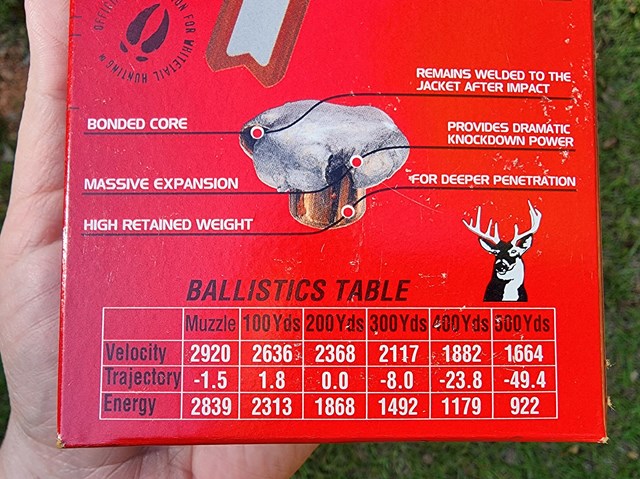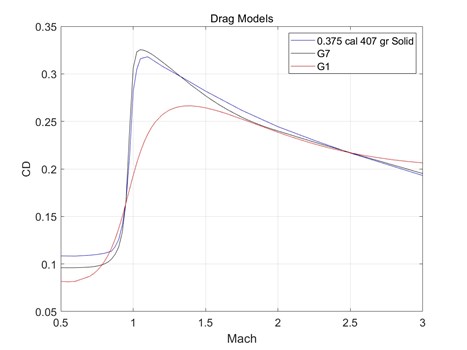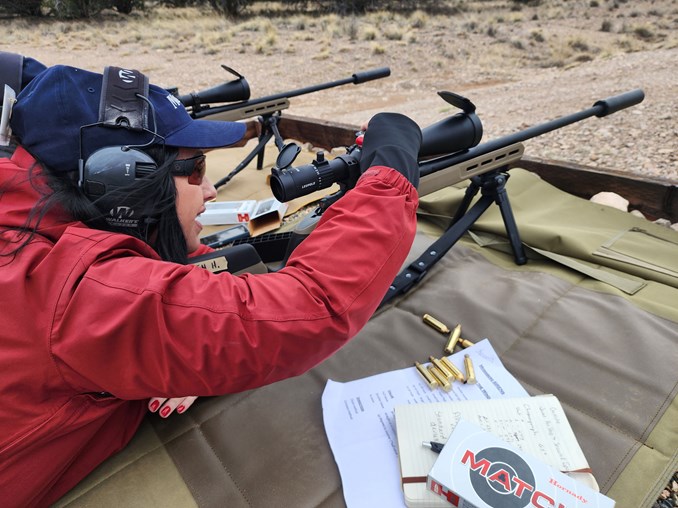
If you’ve ever heard someone say, “this round has a really high ballistic coefficient,” you might have some sense of what they mean, but there’s a good chance that neither you nor the BC bragger really understands the full meaning of what they’re talking about.
Ballistic coefficient, in short, is a measure of how well an object in flight resists drag. When we’re talking about bullets specifically, we know that a bullet travels not in a straight line, but in an arc—first rising, then making a slow decent back down to the line of the muzzle and lower than that until it (eventually, if not stopped by anything else) falls to the earth. Exactly how quickly it falls from the apex of its curved trajectory, and consequently how far it can travel before gravity pulls it to the ground, is what we typically want to know when looking at the bullet’s BC. The higher the BC, the “flatter” the bullet will shoot.

If you’re a hunter, you’ve seen those number charts printed on the side of a box of ammo. They’ll tell you that your projectile will drop X number of inches at 200 yards, 300 yards, 400 yards, and beyond. These numbers are a function of the bullet’s ballistic coefficient, and they’re helpful to know if you are hunting at reasonable ranges. If you’re a long-range target shooter who deals in precision everything, however, ballistic coefficient will soon let you down. Why?
Why Ballistic Coefficient Falls Short
The trouble with ballistic coefficients is that they’re all an approximation based on calculations. You get BC by dividing a bullet’s sectional density (calculated using caliber and weight) by its form factor, which is the bullet’s drag divided by the drag of a standard bullet. Therefore, BCs are based on one “standard” bullet and then extrapolated from there to apply to other bullets. There’s more to it than that (much more), but without getting into the weeds: Ballistic coefficients are calculations utilizing averages, and there’s an inherent “fudge factor” built in.
Better BC calculations (G7 as opposed to the old G1, for example) are available now, based on our modern bullet shapes and configurations, but they are still calculations based on a generic standard bullet—albeit a more contemporary one. The farther out you are shooting, and therefore the slower your bullet is traveling, the more slight variance and imprecision in the calculations will begin to change your point of impact.
But there’s a better way.
Why Drag Curve Is More Precise
Drag curve has overtaken BC as the measurement of choice for long-range precision shooters. There’s a good reason for this: Doppler radar now allows us to measure the exact flight of a projectile from start to finish and gives us precise, actual data by measuring every foot of flight, taking measurements approximately every millisecond. Once we’ve taken these radar measurements, we know exactly what the flight is instead of relying on a calculation of what the flight should be. We know what this specific bullet is doing rather than comparing it to a generic standard bullet.

Berger Bullets graph cutline: This graph from Berger Bullets shows the imprecision of the G1 and G7 BC calculations. The red and black lines represent what the ballistic coefficients said this bullet should be doing at various speeds (and thus over various distances). The blue line is the radar measurement of what the bullet actually did (the drag curve). Note the G7 BC line is relatively close to the actual flight, but long-range shooters are looking for more precision than just “relatively close.”
Bullet manufacturers and well-funded labs (mostly government) are about the only ones who can afford to invest in this radar, but companies like Hornady have made all of the data available through ballistic apps. You plug in the bullet you’re using, your rifle data, environmental conditions and more, and the app will spit out a drag curve table for you. You’ll know exactly what your bullet is doing at any specific distance you want to shoot at.
This drag curve measurement is practically perfect. I say “practically” because as you approach extreme distances of, say, two to three miles, tiny individualized factors like the wear in your rifle’s barrel will begin to show up as slight imprecision in the drag curve an app provides, and these minute details matter to really serious long-range competitors. Those shooters will often seek a PDM—personal drag model, where their bullet of choice is measured by radar out of their own personal rifle to eliminate further variables. This is extreme stuff, but that degree of precision is important to the most intense long-range shooters.
Bottom line: Ballistic coefficient was the best tool for understanding bullet drop that we had for a long time, and those usually-BC-based numbers on a box of hunting ammo are still good enough when you’re shooting a deer at 300 yards. But if serious long-range precision is what you’re after, drag curve has made BC irrelevant. When you abandon ballistic coefficient for drag curve data, you’re giving up an approximation in favor of a precise measurement, and in long-range shooting, precision is the name of the game.















































